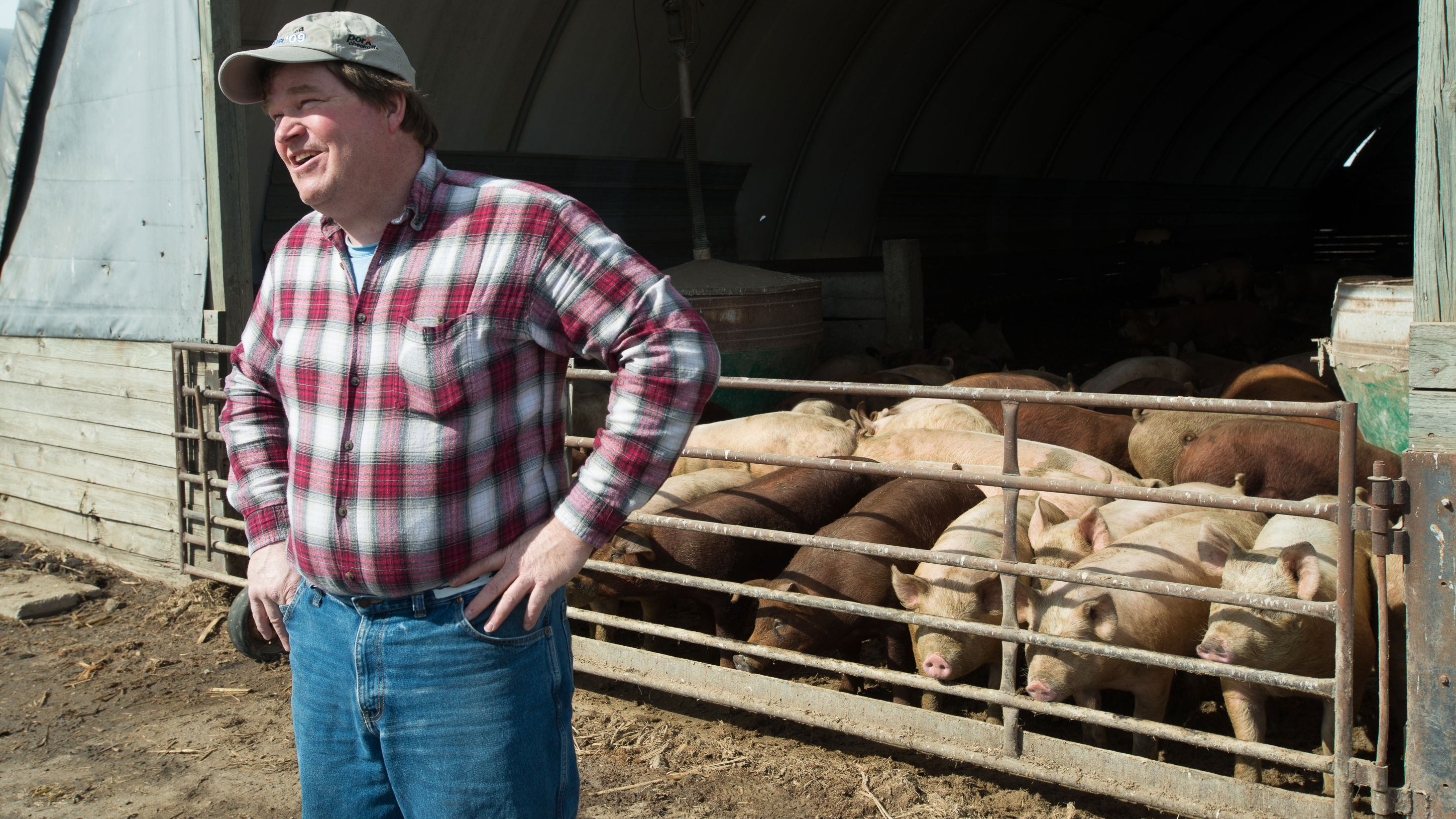We’re about to enter the post-antibiotic era, in which perhaps the most transformative medical technology ever discovered becomes obsolete. We don’t have good backups, and so officials are trying to do whatever they can to slow the speed at which bacteria are developing antibiotic resistance.
As part of that program, the FDA has told livestock producers that they can no longer use antibiotics as growth promoters. Official are still hammering out the final details, but we know that antibiotics for livestock will no longer be sold over the counter, and instead will require a prescription from a veterinarian.
What we don’t know is whether the new rules will actually work. Will farmers comply? Are the regulations worded in such a way as to make a real dent in antibiotic use?
To explore these questions, I visited a veterinary clinic while I was in Iowa. I drove out to the town of Colfax and met with veterinary doctor Sarah Myers and hog farmer David Struthers.
Myers — hustling to keep up with her schedule, with a bulging pregnant belly leading the way — grabbed her lunch to eat while we talked. Struthers, a pious man whose voicemail greeting notes that he’s a “father, farmer, and most importantly, sinner saved by the grace of our savior Jesus Christ,” keeps his flannel shirt tucked tight into his jeans. But I also detected a glimmer of mischievous humor in his eyes.
Struthers doesn’t see the FDA regulations triggering much of a change in the way he uses antibiotics. He doesn’t use antibiotics just for growth promotion, he said, and he thinks few farmers do. But he does use antibiotics preventively.
“It’s a lot better to stay healthy, rather than get sick and then try and get healthy,” he said. “So if we see a weather event coming in, we might put antibiotics in the feed to make sure the animals don’t get sick.” Or, if he hears a pig coughing, he might add antibiotics to their feed; that’s much easier than figuring out which pig is coughing, chasing it down, and giving it a shot (then waiting for all the other pigs it infected to develop symptoms). This preventive antibiotic use wouldn’t necessarily change under the new regulations.
Unless it changes for unintended reasons. The new FDA rules call on vets to prescribe and document every antibiotic used, and this extra hassle may cause farmers to use the drugs less frequently. “Dave will just call and get meds all the time,” Myers said, gesturing across the stainless steel examining table, “which is fine because you know how to use them. A lot of these farmers know what their animals need more than I do.” But if every prescription requires a vet to make a farm visit and fill out paperwork, it may simply become too expensive.
“I think you’ll see some reduction if they are going to be as strict as they say they are,” Myers said, “because people just won’t have the time. Or they’ll be breaking the law to get around it.”
This could mean more sick animals that farmers can’t afford to heal. In Denmark, after that country cracked down on farm antibiotics, more pigs died. Still, it’s worth pointing out that, as farmers figured out the new system, mortality levels went back to where they’d started.
There will be some unalloyed good that comes from the FDA regulations, Myers said. Some farmers are still using some antibiotics in the same class as the banned Metronidazole, and they’re not always aware of the dangerous side effects. The new rules will allow vets to educate them.
When Struthers hears people talking about antibiotics, he often hears misconceptions: People are often worried that they are getting antibiotics in their pork — but farmers stop giving the medications to the animals long before they are slaughtered. A more valid concern is that pig bacteria might gain resistance to antibiotics, and then pass that resistance to a human bacteria. There is a lot of evidence that that can occur (see this summary too).
Struthers says he would be willing to make sacrifices to try to avoid that outcome, but he wants to see that sacrifice shared more widely. Hospitals, for instance, are starting various programs to cut back on antibiotics. But (at least in my experience) some doctors still offer antibiotics as a placebo, to help the patient feel he’s getting something from the visit.
Maryn McKenna, who probably covers this topic better than anyone else, has written:
Simply reducing antibiotic use (if that does indeed happen) isn’t adequate; by itself, it may even be a threat to welfare. Changing the livestock practices that made antibiotic use necessary will improve animal and human health both.
It would take time and money for America’s animal farmers to figure out if there is a way they can change things to make livestock less susceptible to disease. If we’re serious about the problem of antibiotic resistance, we’d better be prepared to pay for these changes at the butcher counter, and to do our part every time we go to the doctor.





